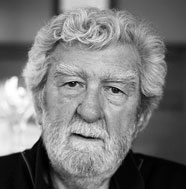Middle Distance
Looking out at Constable’s distances,
nothing I wanted to be, what I am.
He grows on you, Constable, so childish
at the beginning, toy farms, slow pastures,
the small trees bundled up as if for sale,
everything schooled out and diminished in
the direction of Salisbury—or
is it Dedham?—1804, thirty,
and already decades behind Turner.
History is easy. I could write all day
dropping names into the spaces between.
Most of C’s best oils are on paper or
are drafts of pieces that get too finally
finished, even the very great ones
on which his fame, as we like say, “rests.”
Please look at his A Cart with Two Horses,
1814, workhorses of course, one
posed in profile, the other turned toward
the back of the painting, sold privately
cheaply, like most of his work. Millionaire
Turner evolves into near abstraction,
asking light to be sunlight purely, fire
from within nothing but what he calls a
landscape. Besides, he traveled, an antique
traveler in antique lands. But I love C’s
local Study of Tree Trunks, with a figure
beside them, more oil on paper, seven
years after Horses. Constable’s aging.
He thinks I’m a cloud, a long white body
lying in the air over Hampstead; he thinks
clouds of storm shapes are bodies, like great elms.
I’m his anomaly, still thinning out.
Another day he sees me lying down
undulant in the middle distance, the
cloud come at last to earth as the earth is
part of the corn, the good ground under corn,
the painting piecemeal, the way he paints, so
that you have to stand at a real middle
distance just to see me. Turner wants me
to be The Angel Standing in the Sun,
apocalyptic in the afterlife,
though I prefer my body as a field
in which I live over again as flesh—
or is it flush?—against a stream, or of
the stream, as C also sees me, where a
boy on a barge on canvas is taking
a cloud-white horse to its destination
far downriver. And I am the water.
And the light in the water. And if it
is possible, having also been of
the plowed and planted and replanted earth,
I am the sky domed over the boat boy’s
possible future, when he then arrives
and puts to work all that really matters.
Copyright © 2019 Stanley Plumly. This poem originally appeared in Kenyon Review, May/June 2019. Reprinted with permission of David Baker for the Estate of Stanley Plumly.

